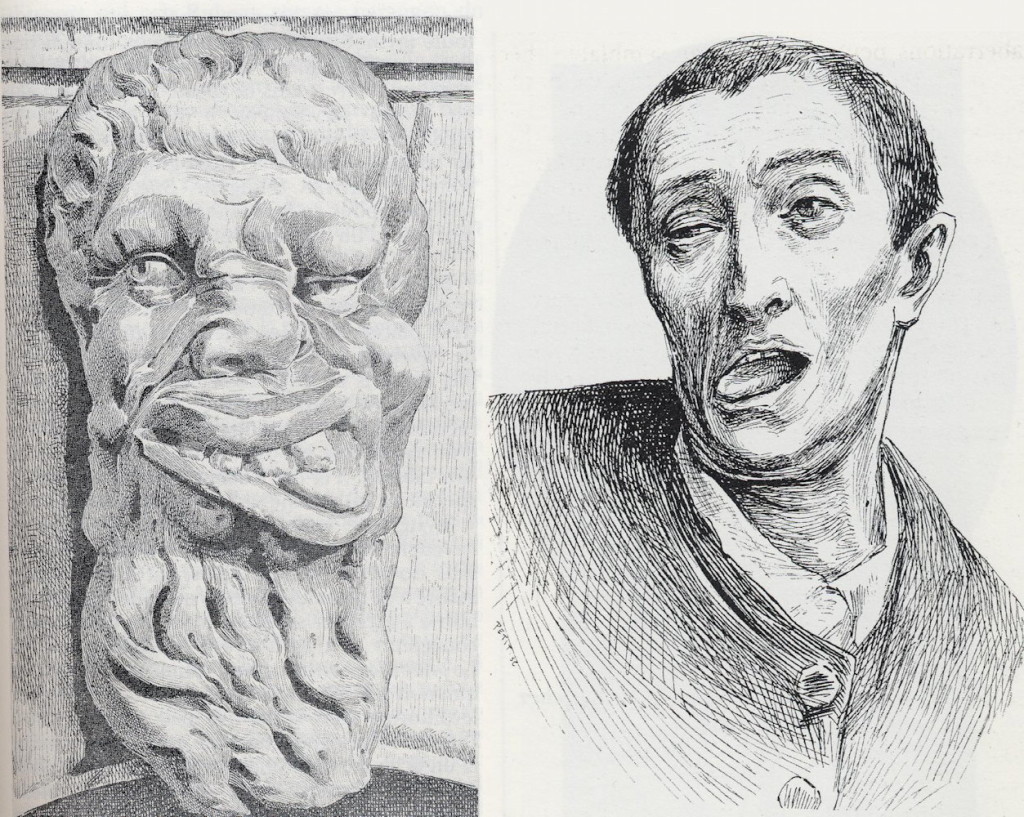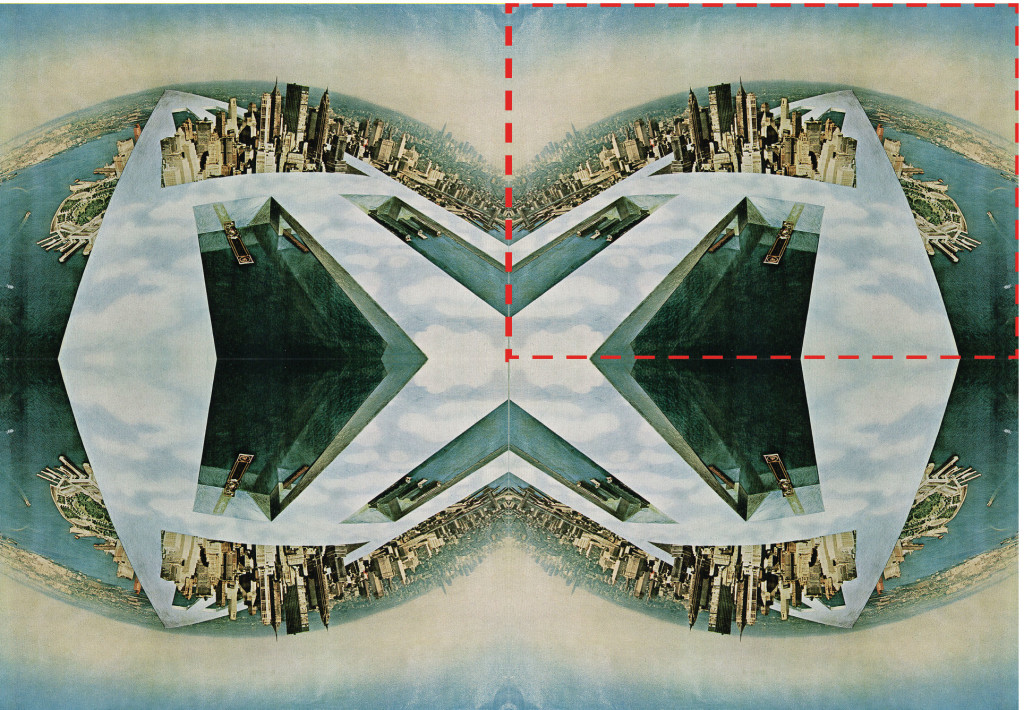Hernan Diaz Alonso
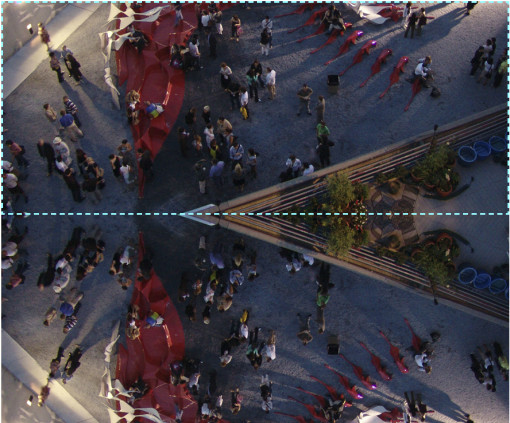
by Golnaz Ebrahimi
GE: What do you think about the Rio de Janeiro competition? What were your thoughts on the content of the projects associated with the theme of sick & wonder?
HDA: I think that not many participants found a common ground between imagination and possibilities. Some of them were really imaginative but kind of utopian in the traditional sense, and some of them were trying to find a balance in the database of the traditional. Very few tried to make a connection between both of them.
It’s a complicated time for people working on the urban scale. It seems that the logic of speed, transformation and density of the city (particularly Rio de Janeiro) makes it very difficult to have a sense of a speculative project that is a route in a certain sense of reality. However, most of them were very interesting and courageous.
GE: In your design there is a new sense of beauty, which is distinct from other architecture, what inspired you to define a new form of beauty?
HDA: Usually the inspiration comes from many things, but my inspiration comes from things that are not commonly associated with beauty. Which are distortion, decay or illnesses. I am greatly interested in very trivial things and how that can achieve a sophisticated manipulation of beauty.
I am also inspired by horror class B movies as well as butchery and different methods of cutting flesh. We look a lot to plastic surgery and how it goes wrong and sometimes we look at gorey blood.
There are lots of things in daily life that interest me like if we are looking at a posture and the problem of massing, we may look a lot at pictures of dogs, how dogs sit, move and so on.
But lately, in particular, we are looking a lot at rituals and butcheries.
GE: What does beauty means to you? and what does disgusting mean to you?
HDA: There is a very clear distinction in Spanish between something that is “hermoso” which means nice and “bonito” which is more like beautiful and is more about the moment.
In a way I am interested in the traditional importance of beauty, but at the same time I am also interested in the present and the current moment.
I think that, as always, the aesthetic value relates to beauty because that is always in permanent flux and is not standardized. Our idea of a beautiful person was a lot different a hundred years ago compared to what it is today.
I am much more interested in what the current state of beauty is and some of these (states) are sometimes very close to something that one would consider terrific or disgusting. I would say I am interested in the emotional quality of beauty, in the emotional reaction, what attracts you to something and things that are not attractive or necessarily beautiful in a traditional sense.
GE: We are living in a conventional world, our activities and experiences are limited by conventions which we have made for ourselves or have been made for us by someone else. But at the same time the new technologies have given people the opportunity to experience a new style of life not by their demand but by what has been offered to them. Do you think that it is the same in architecture?
HDA: The answer is yes, Architecture cannot exist without conventions, unlike Art or other creative disciplines which are more free to move in and out of conventions, Architecture exists in relation with the friction that convention presents to it. I really believe that boundaries and conventions are absolutely crucial for Architecture, the question is how much you push it, how much you bend it and how much you transform it. The technologies and all the computational digital tools have expanded radically and changed the field of architecture, this has made a whole season of new conventions possible at the same time, conventions exist, giving us vast possibilities.There is a strong increase at the production level of architecture toward new technologies. The parameters of how we appreciate and understand have not changed yet. So there is a disparity between the sense of production and the sense of appreciation.
People are much more open minded to absorb day by day life, but there seems to be much more resistance when it comes to architecture, because architecture is a field that traces a lot of nostalgia and melancholy, it’s supposed to be about memory and it needs to move very slow.
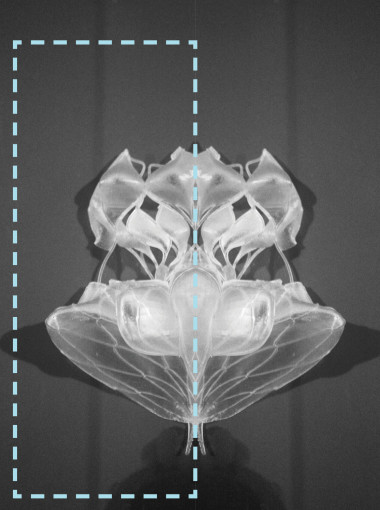
GE: Last year you worked on a project for the Wexner Center, a sculpture made of meat, How did you come up with the idea of using meat as a primary material for this sculpture?
HDA: We look at slaughterhouses very much and I am strongly fascinated by the notion of literality, to be literal in certain things. This was one of the first speculations that we produced in the field of Art, despite the fact we have done many installations in museums, they have always been commissioned with the logic of Architecture. It was one of the few times that we had the opportunity to work as Artists.
What fascinates me is the low end and the high end, the idea was to use cutting edge technologies for production, manipulation through 3-D software, fabrication, robots, milling, and also using probably the oldest material on earth which is flesh. There was a kind of correlation between them and it was a possibility to produce something incredibly exquisite and sophisticated.
GE: How did this project develop?
HDA: The project right now is in stand by, it is not clear if it’s going to happen due to museum regulations. They are not willing to do it although I have explained to them many times that the cow will be already dead as as if we were buying it from the butcher. So right now we are working on a different version that encapsulates the pieces inside glass and plastic.
GE: You mentioned many times that the digital area and computer territories have been considered as a series of tools by many architects, but you don’t think in the same way and you consider them as a partner, that in a way you have a partnership with them, how could this partnership work best?
HDA: My idea has more to do with understanding what’s in technologies’ hands and what possibilities it gives you. I think it’s always important that you have an individual attitude and agenda. There is a basic example I make about Jimi Hendrix, the quality of the sound was in key with the electric guitar and that sound wouldn’t have existed without that technology but at the same time you can have the technology but you can not be Jimi Hendrix. It is really important to always be in partnership with technologies but to also be critical with technologies you are using. Technologies keep changing and upgrading, so if you don’t have a clear idea, attitude or conversation with the kind of work you are going to introduce, the technologies will dominate you. That’s why I have always been sceptical about the idea of a design scheme dictated by technology or a particular technique even if it’s scripting, Robot, animation, etc. So I am interested in all of them and I am not interested in any of them in particular, because you need to keep your sense of humanism in terms of individual quality in relation to it.
GE: Which one of your projects do you like most and why?
HDA: I attempt to not look back that much, but when I look back at the show installation that we did for the Mac “Pitch-Black”, I still find a very good DNA in that project. I also really like the recent project that we did for the library of Helsinki, as well as the two projects that we did for Thyssen-Bornemisza museum in Patagonia. From the oldest project; I still like the competition that we did for Spain “TABAKALERA”. I also like some of the designs we we did like the rose chair and the Alessi collection, but I don’t have one that I necessarily like the most but these are the ones I think are good material to develop, revisit and re-configurate on. Every architect and designer hates every thing they have done, I think it’s supposed to work like this, you have to love (your work) when you are doing it and hate it when you have finished. Its like a relationship you have to love your partner while you’re with him and hate him when you break up. I think that’s how one should work.
GE: Can you tell me what you think is one of the most disgusting places or cities in the world and why?
HDA: There are places that fascinate and influence you in one moment of your life and then for some reason stop. Living in Barcelona was really important for me at one moment. London is a city that always makes me want to go back, there is something there about their design, culture, etc. At the same time, London is stiff, harsh and snobbish with a high level of craziness. I am a city guy, I like cities, I don’t like nature that much, so I’m normally fascinated by big cities. LA is my favorite city in the world to live, I can’t imagine any other place to live in. But usually what interests me about places has nothing to do with architecture, but with personal memories, who I was with, having a dinner or conversation, I am much more human than architect when you come to those things. There are places that I find amazing as an architect but completely boring as a human and vice-versa. Mostly I like big cities like London, Rio, Barcelona, Hong Kong, L.A, Mexico city. I like messy cities with a lot of density that are not perfect and not well planned.I probably have been in more than 100 cities. The more you travel to cities, the more you realize how they are alike. Cities have similar deseases and similar things that are beautiful and disgusting, but usually what I find disgusting is not necessarily what looks disgusting. I find boring cities disgusting, perfect cities, and I find cities that don’t have the imagination to change disgusting. I find that most of the famous and traditional cities in Europe have a lot of boring history, I don’t that they are necessarily disgusting, but West Asia is a place that has always confused me, I wouldn’t say I’ve seen the most disgusting things in asian cities, but I’ve certainly seen things I couldn’t grasp, and this usually intrigues me.
ITALIAN VERSION _____________________________________________
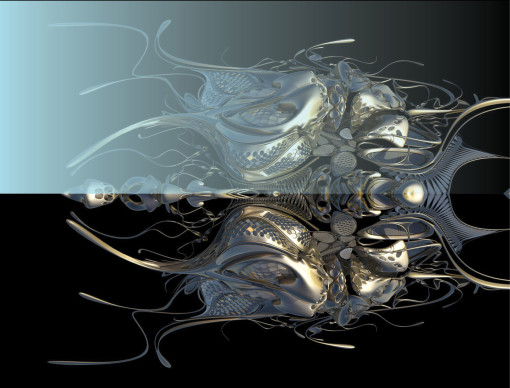
GE: Cosa ne pensi del concorso su Rio De Janeiro? Quali erano i tuoi pensieri riguardo i contenuti dei progetti associati al tema, disgusto e meraviglia?
HDA: Penso che per molti partecipanti non sia stato facile trovare un terreno comune tra immaginazione e possibilità. Alcuni progetti erano davvero fantasiosi e utopici, mentre altri hanno cercato di trovare un equilibrio secondo una logica più tradizionale. Erano molto pochi quelli che cercavano di fare un collegamento tra ciascuno di questi aspetti. È un momento complicato per le persone che lavorano su scala urbana. Sembra che le logiche di velocità, trasformazione e densità della città, in particolar modo Rio de Janeiro,rendano molto difficile avere il senso di un progetto speculativo che sia un percorso verso qualcosa di concreto. Tuttavia i progetti erano molto interessanti e audaci.
GE: Nel tuo lavoro c’è un nuovo senso di bellezza che è diventato l’elemento distintivo della tua architettura. Che cosa ti ha spinto a definire questa nuova forma di bellezza?
HDA: Di solito l’ispirazione viene da molte cose; la mia viene da cose che non sono comunemente associate alla bellezza, ad esempio distorsione, decadenza o malattie. Sono interessato a cose molto banali attraverso le quali possiamo arrivare ad una sofisticata manipolazione della bellezza. Sono anche ispirato da film horror di serie B, nonché dai metodi di macellazione e dal diverso taglio della carne. Osserviamo un sacco di chirurgia plastica…guardiamo sangue coagulato. Ci sono un sacco di cose nella vita quotidiana che mi interessano, una postura particolare o il problema delle volumetrie. Possiamo imparare molto dal portamento dei cani, da come si siedono, si muovono e così via. Ma ultimamente stiamo studiando un sacco di rituali soprattutto nelle macellerie.
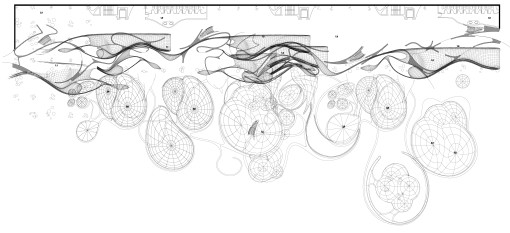
GE: Che cosa significa per te la bellezza? E cosa significa disgustoso?
HDA: Vi è una distinzione molto chiara in spagnolo tra qualcosa che è “hermoso” che significa bello e “bonito”, che è più simile a bellissimo e it’s more about the moment. In un certo senso sono interessato all’importanza tradizionale della bellezza, ma anche a quella attuale. Penso che come sempre il valore estetico si riferisca alla bellezza che è sempre in movimento e non standardizzata. La nostra idea di “bella persona” 100 anni fa era diversa da come noi la consideriamo oggi. Io sono molto più interessato a ciò che è lo stato attuale della bellezza che possiamo ritrovare anche nel concetto di terrificante o disgustoso. Direi che mi interessa la qualità della bellezza come reazione emotiva, magari mi attrae un particolare all’interno di qualcosa che non necessariamente è considerato bello in senso tradizionale.
GE: Viviamo in un mondo convenzionale, le nostre attività e le esperienze sono limitate da convenzioni che abbiamo creato per noi stessi o sono state fatte per noi da qualcun altro. Allo stesso tempo le nuove tecnologie hanno dato alle persone l’opportunità di sperimentare un nuovo stile di vita, non per loro richiesta, ma come effetto di ciò che è stato loro offerto. Pensi che in architettura sia la stessa cosa?
HDA: La risposta è sì, l’architettura non può esistere senza convenzioni, a differenza dell’arte o delle altre discipline creative che sono più libere di muoversi dentro e fuori di esse: l’architettura esiste in relazione al suo attrito con le convenzioni che le si presentano. Credo davvero che i confini e le convenzioni siano assolutamente cruciali per l’Architettura, la domanda è quanto spingerle, quanto piegarle e quanto trasformarle. Le tecnologie e tutti gli strumenti digitali computazionali hanno ampliato radicalmente e cambiato il campo dell’architettura, questo ha reso possibile tutta la stagione delle nuove convenzioni, ma contemporaneamente esse ci sono e abbiamo più possibilità. C’è un forte incremento nella produzione di architetture legate a nuove tecnologie. I parametri del nostro modo di apprezzare e capire non sono ancora cambiati. Quindi esiste oggi una disparità tra il significato di produzione e il significato di apprezzamento. Le persone sono molto più aperte ad assorbire giorno per giorno la vita, ma sembra che ci sia molta più resistenza quando si tratta di architettura, perché l’architettura è un campo che lascia un sacco di nostalgia e malinconia e presuppone un lavoro sulla memoria, mentre tutto cambia molto lentamente.
GE: L’anno scorso hai lavorato al progetto per il Wexner Center, una scultura fatta di carne. Come ti è venuta l’idee di utilizzare carne come materia prima per questa scultura?
HDA: Osserviamo molto i macelli e sono fortemente affascinato dal concetto di letteralità, essere letterale in certe cose. Questa è stata una delle nostre prima incursioni nel campo dell’arte, perché nonostante il fatto di aver creato molte installazioni nei musei, ci veniva sempre chiesto di ideare opere con una logica architettonica. È stata una delle poche volte in cui abbiamo avuto l’opportunità di lavorare come artisti. Nell’opera ciò che mi affascina è la parte bassa e la parte alta. L’idea era quella di utilizzare tecnologie all’avanguardia per la produzione, l’uso di software 3D, la fabbricazione, l’impiego di robot, la fresatura e soprattutto l’utilizzo del materiale più antico sulla terra: la carne. C’è stata una sorta di correlazione tra le parti ed è stata l’occasione per produrre qualcosa di incredibilmente raffinato e sofisticato.
GE: Come procede il progetto in questo momento?
HDA: Il progetto attualmente è in stand by, non è ancora chiaro se si potrà realizzare a causa dei regolamenti museali. Non sono ben disposti, anche se ho spiegato ripetutamente che la mucca sarà già morta come se la comprassimo in macelleria. Quindi, in questo momento, stiamo lavorando su una versione diversa che incapsula i pezzi all’interno di vetro e plastica.
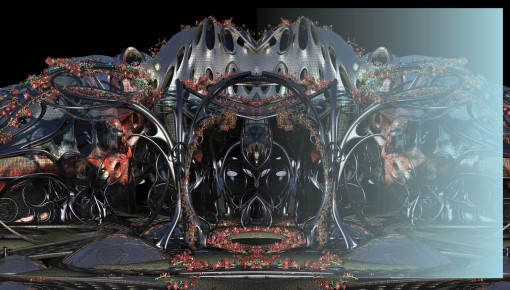
GE: Hai citato più volte che l’ambito digitale e i territori del computer per molti architetti sono stati considerati come una serie di strumenti. Tu li consideri come dei soci, quasi a creare con loro una partnership. Come potrebbe allora questa società funzionare meglio?
HDA: La mia idea ha più a che fare con la comprensione di cosa è nelle mani della tecnologia e quali siano le possibilità che ti dà. Penso sia sempre importante avere un atteggiamento individuale e un’agenda di azioni.
C’è un esempio di base che faccio con Jimi Hendrix. La qualità del suono era un tutt’uno con la sua chitarra elettrica e quel suono non esisterebbe senza la tecnologia, ma allo stesso tempo si può avere la tecnologia, ma non si può essere Jimi Hendrix. È davvero importante usare sempre in appoggio le tecnologie ma anche essere critici con ciò che utilizziamo. Le tecnologie continuano a cambiare e aggiornarsi, quindi se non avete chiara un’idea, un atteggiamento o un dialogo con il tipo di lavoro che state per iniziare, le tecnologie allora vi remeranno contro. Ecco perché sono sempre stato scettico circa l’idea di uno schema di lavoro stabilito dalla tecnologia o da una tecnica particolare, anche se si tratta di scripting, robot, animazioni, ecc… Sono interessato a tutto questo ma sono anche interessato a nulla di tutto ciò, perchè è sempre necessario mantenere il senso dell’umanità in termini di qualità individuale in relazione ad esso.
GE: Quale dei tuoi progetti ti piace di più e perché?
HDA: Cerco di non guardare indietro più di tanto, ma quando guardo indietro penso all’installazione che abbiamo fatto per il Mac “Pitch-Black”, ritrovo ancora un buon feeling con quel progetto. Mi piace molto anche uno recente che abbiamo fatto per la biblioteca di Helsinki, così come i due progetti per il museo Thyssen-Bornemisza, in Patagonia. Tra i più vecchi mi piace il concorso che abbiamo fatto in Spagna dal nome “Tabakalera”. Mi piacciono anche alcuni dei disegni che abbiamo fatto come una sedia rosa e la collezione Alessi, ma non ne ho uno che mi piace più degli altri. Credo che tutti rappresentino un buon materiale da sviluppare nel rivisitarli e riconfigurarli. Ogni architetto e designer odia tutto ciò che ha già fatto, penso che dovrebbe funzionare in questo modo, si deve amare il proprio lavoro quando ci si lavora e odiarlo quando hai finito. È come un rapporto di coppia, devi amare il partner quando sei con lui e nel momento in cui si rompe, bisogna odiarlo. Penso che questo sia il modo in cui si dovrebbe lavorare.
GE: Potresti dirmi quale pensi sia uno dei posti (o una città) più disgustosi e perché?
HDA: Ci sono luoghi che ti affascinano e ti influenzano in un momento della tua vita e poi per motivi vari smettono di farlo. Vivere a Barcellona è stato molto importante per me in un momento preciso della mia vita. Londra è invece una città che mi comunica sempre voglia di tornare indietro, c’è qualcosa circa il suo disegno, la sua cultura che me lo fa pensare. Londra è anche rigida, dura, snob e con un alto livello di follia. Io sono un ragazzo di città e preferisco la città, non mi piace la natura più di tanto, quindi sono sempre affascinato dalle grandi città. Los Angeles è la mia città preferita per vivere, non riesco a immaginare un altro posto diverso da lei. Ma di solito quello che mi interessa dei luoghi sono cose che non hanno nulla a che fare con l’architettura, quanto invece con i ricordi personali, chi era li, una cena o una conversazione. Sono molto più umano di un architetto quando si arriva a queste cose. Ci sono luoghi che trovo incredibili come architetto ma completamente noiosi come essere umano e viceversa. Per lo più mi piacciono le grandi città come Londra, Rio, Barcellona, Hong Kong, Los Angeles, Città del Messico. Mi piacciono le città disordinate con un sacco di densità che non sono perfette e non sono ben pianificate. Probabilmente sono stato in più di 100 città. Tanto più si viaggia nelle città, tanto più ti rendi conto di quanto come siano simili. Le città hanno simili patologie e raba che è bellissima e disgustosa, ma di solito quello che trovo disgustoso non è necessariamente quello che sembra tale. Trovo disgustose le città noiose, le città perfette, e le città che non hanno la fantasia necessaria per cambiare. Trovo che le più famose e tradizionali città europee abbiano un sacco di storia noiosa, non credo necessariamente che siano disgustose. L’Asia Occidentale è un posto che mi ha sempre innescato un conflitto; non posso dire di aver visto le cose più disgustose nelle sue città, ma di certo ho visto cose difficili da capire e quando non riesco a capire una cosa di solito mi interessa.
Related Posts :
Category: Article
Views: 7853 Likes: 2
Tags: GOLNAZ HEBRAIMI , Hernan Diaz Alonso , Sick & Wonder , xefirotarch
Comments:
Info:
Info:
Title: Hernan Diaz Alonso
Time: 19 settembre 2013
Category: Article
Views: 7853 Likes: 2
Tags: GOLNAZ HEBRAIMI , Hernan Diaz Alonso , Sick & Wonder , xefirotarch

